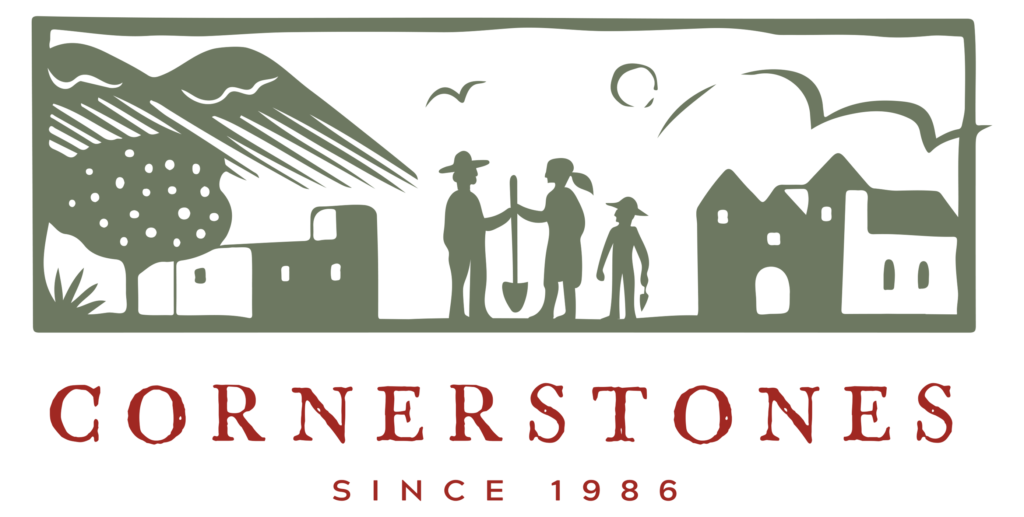Galisteo, New Mexico
La Sala de San Jose is a historic adobe dancehall located in Galisteo, NM and constructed 1895-1898. It has 7 large double-hung windows divided into 4 large glass panes, 4 on the South side of the building and 3 on the North side. The windows were originally ordered by Sears & roebuck catalog, shipped by railroad from the East coast to Lamy, NM and then carried by horse and wagon the 10 miles to Galisteo.
The grant funds supplied by Bank of America were targeted for restoration of the two most damaged windows from the South side of the building. The work was performed by a paid master wood-worker, with a machine shop 20+ miles away in Santa Fe, NM and 3 community volunteers who were trained on- site by the master wood-worker. Due to scheduling needs, work was performed 1 day p/week in 4 hr work sessions, beginning in late July and ending in September.
The first step was to construct work stations. Two 4×8’ melamine-surfaced plywood panels were cut down, and then 2×4’s were routered to form an inside edge for the panels to fit into, with a higher lip around the panels; the panels were screwed into place, and then put onto sawhorses. This allowed for a stable and easy clean work surface, with a surround barrier to keep the windows in place.
Second, the two windows were removed from their window frames, and on the work tables hand scraped and sanded to the wood surface. These windows had decades of paint layers, as well as repairs and brackets that had been added, and all had to be removed. The windows were then disassembled, each piece being labeled, and glass panes removed. While this work was performed, large sheets of plexi-glass were temporarily installed in the window casements.
Third, pieces of window frame (mostly rails that rested on the sills, and some muntins) that were too damaged to restore were replaced by parts milled in the Santa Fe machine shop. Side jams that held the window frames in place also had to be repaired, and all sills had to be replaced. Because the sills were so thick, wide and long several pieces had to be milled and glued together, using clamps for setting. Lumber used was NM Ponderosa Pine, due to its weather & pest resistance, and which had to be supplied by a mill in Taos.
Fourth, after repairs were made the wood surfaces were treated with several coats of preservative (linseed oil & ), followed by 2 coats of primer and 2 coats of finish paint.
Finally, all parts were –re-installed.



